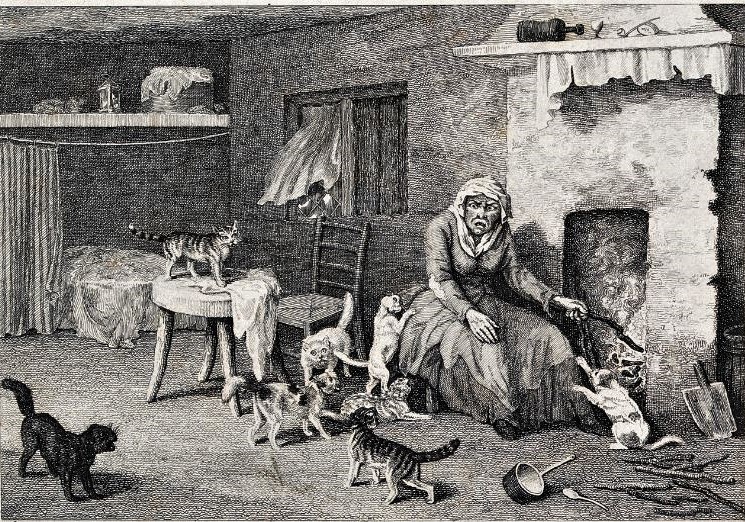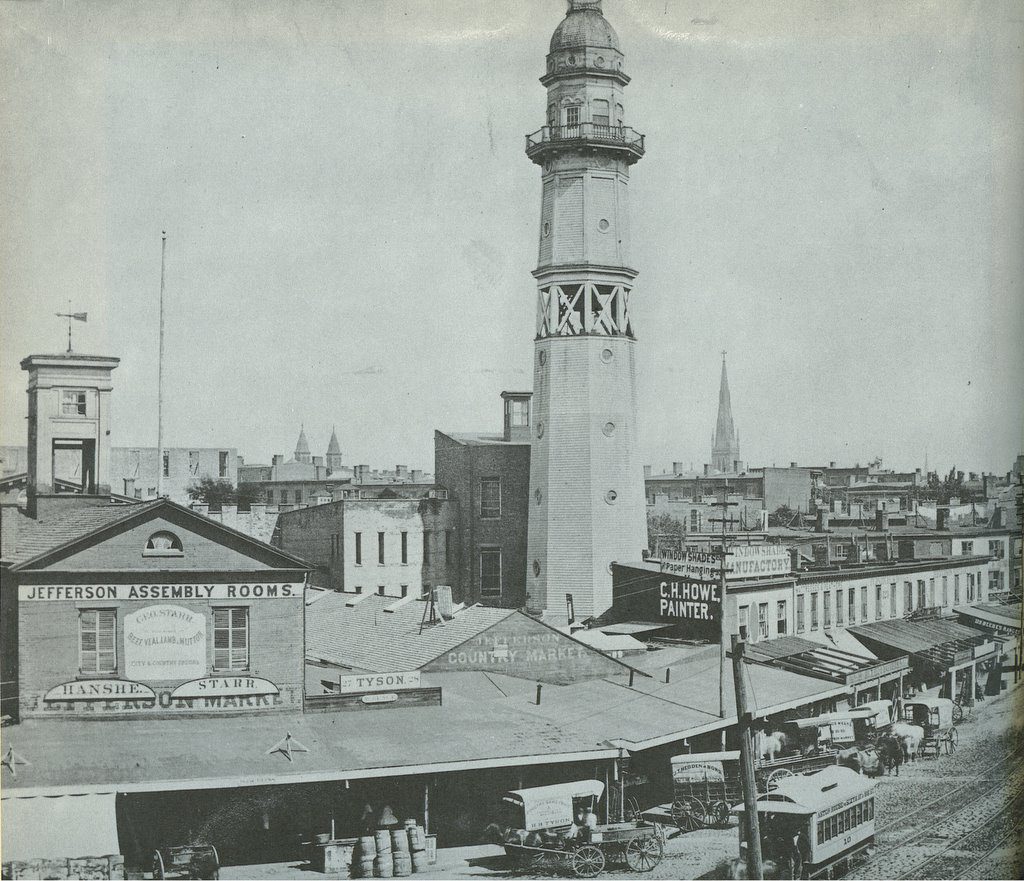Cats in the Mews: March 25, 1890

On March 25, 1890, Jefferson Market Police Court Justice White committed Mrs. Jane Duncan to the care of the Commissioners of Charities and Correction “for examination as to her sanity.” The sentencing stemmed from charges from her landlord, Dr. Thomas C. Knox, who owned a small building at 30 Bedford Street, on the southeast corner of Carmine Street.

Dr. Knox, a former city coroner, operated a drug store on the ground floor of the building. In 1888, he rented some rooms above his shop to Jane Duncan and her late husband, William W. Duncan, a carpenter. William died on March 17 at the age of 63, leaving 58-year-old Jane alone — in the human sense — with her 29 felines.
According to an article in The Sun, Jane had refused to attend her husband’s funeral, choosing instead to stay locked up with her cats. She also refused Dr. Knox’s offer of assistance. The couple had married late in life, so they did not have any children.

During her court hearing, Jane begged Court Officer Farrell to allow her to stay with her cats on Bedford Street. Sadly for both Jane and her feline friends, her sanity was at question, and thus, she had to be taken away from her home for closer medical examination.
Neighbors on Carmine and Bedford Streets told The Sun reporter that Jane had been “harmlessly insane.” Over the past two years, she had isolated herself from all humans except for her husband, and she devoted all her time to her cats.
William had provided liberally for her and the cats, but even he spent most of his time out of the house. Every morning the butcher delivered a large supply of the best porterhouse steak for the cats, which he left in the hallway for William to pick up when he returned from his carpentry jobs (the butcher and grocer were not allowed to enter the apartment; Jane kept the door barricaded at all times.) After her husband passed away, Jane had no other choice but to leave the apartment in order to purchase food for her and her pets.
The Fate of the Cats of Bedford Street
Following Jane Duncan’s sentencing, the court officer ordered an agent from the Bergh Society (ASPCA) to check on the status of the cats, as was permitted by a New York law passed in 1867 to expand the ASPCA’s oversight. As was reported in The New York Times, “the state of things that met his eyes when he entered was both pathetic and amusing.”
According to the Times, “a troop of cats great and small, young and old, of all colors and conditions, came eagerly toward the door, expecting to see, no doubt, their demented but gentle mistress. A chorus of feline cries of every pitch was sent forth, and it was evident that the cats were very hungry.”

Upon careful examination of the rooms, the agent found 23 adult cats and 6 kittens, of which a large yellow tomcat with “a most winning expression of countenance” appeared to be the boss. The room was filled with boxes filled with cats; a small box on top of a wardrobe contained the 6 kittens. “As might have been expected, the need of more thorough ventilation was apparent at once.”
Now here’s where it gets very sad, so you may choose to stop reading now. I am a journalist sharing history, so unfortunately I must finish this story, as cruel as it may be.
According to The Times, the agent put all of the bewildered adult cats on the street to fend for themselves; “their tender offspring consigned to a watery grave.”
The Sun reported a similar cruel ending, albeit, an even harsher outcome. According to the Sun, the agent drowned the kittens and then, when the adults cats refused to leave on their own accord, he tossed them from the second-floor window. As the terrified cats rained down on Bedford Street, “the accompanying protests in the strongest terms of the feline vocabulary were ear-splitting.”
As the reporter noted, “The people about Carmine and Bedford Streets think the agent of Bergh’s society sent to dispose of the helpless cats was guilty of all the cruelty which he was expected to prevent.”
Although the adult cats landed on their four feet and survived, “these were pampered aristocratic cats unused to the ways of the world and quite unable to make living from the unprotected refuse barrels of the neighborhood.” The neighborhood was already home to “a full complement of vagrant cats, and the idea of seventeen new and untrained voices added to the back-yard chorus drove people to thoughts of revenge and violence almost before the irresponsible agent of Bergh got away. It would not be safe for him to appear within ten blocks of Bedford and Carmine Streets again.”
I’m sure I’m not alone when I say that I hope the agent did show his face again in that neighborhood, and that he got his just deserts. (Can humans land on both feet if they are pushed from a second-floor window?)
The Herring Farm
Jane Duncan lived with her cats at 30 Bedford Street, just a few blocks southwest of Washington Square Park in the southern end of Greenwich Village. This area of the city was shaped by Dutch land grants allotted to Pieter Janszen Haring (who came to America in 1633) and to a small group of freed African slaves, who established the earliest farms on the land.

Under British rule, these farms were owned by Nicholas Bayard, Elbert Herring, and Trinity Church. During the early Federal period, Aaron Burr purchased the majority of these lands as a real estate investment. The farm was divided into lots in 1794, and in 1803, Burr began selling off parcels to speculative developers.
I have written extensively about the Herring Farm in the following cat tale from 1899 (this story also deals with some animal cruelty), so if you are interested in reading more about the history of the farm, check out this story: https://hatchingcatnyc.com/2018/02/26/cat-fell-west-fourth-street/



